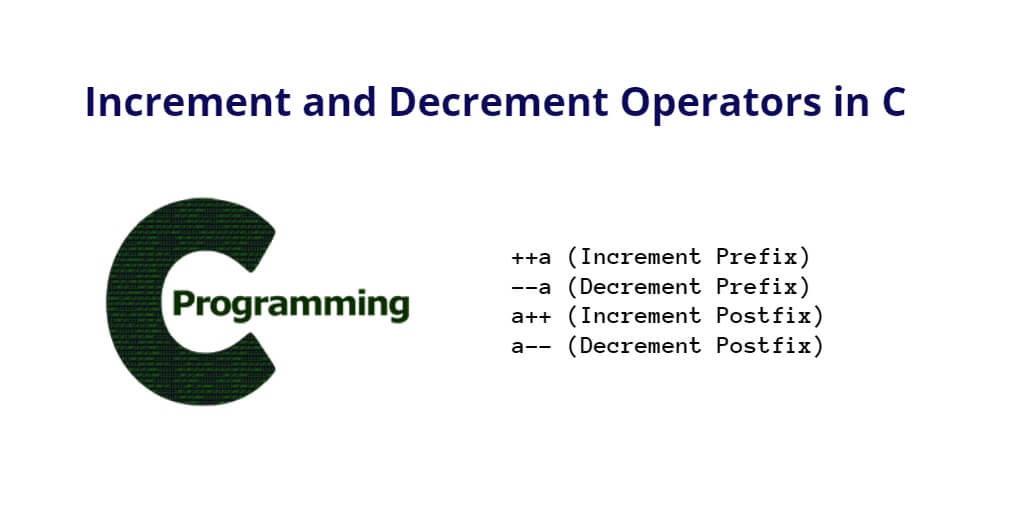Increment and decrement operators in c; In this tutorial, you will learn about increment operator ++ and the decrement operator — in detail with the help of c programming examples.
C programming Increment and Decrement Operators
In the C programming language, there is an operator known as an increment and decrement operator which is represented by ++ and — symbols. And it is used to increase and decrease the value of the variable by 1.
There are four types of Increment and decrement operator; as shown below:
| C programming Increment and Decrement Operators |
|---|
| ++a (Increment Prefix) |
| –a (Decrement Prefix) |
| a++ (Increment Postfix) |
| a– (Decrement Postfix) |
Syntax of C programming Increment and Decrement Operators
See the syntax of C programming pre and post Increment & Decrement Operators; as shown below:
++var a; (or) var a++; –-var a; (or) var a–-;
Note that:- About pre & post-increment and decrement operators in C; as shown below:
- If you use the
++operator as a prefix like:++var, the value of var is incremented by 1; then it returns the value. - If you use the
++operator as a postfix like:var++, the original value of var is returned first; then var is incremented by 1.
The -- the operator works in a similar way to the ++ operator except -- decreases the value by 1.
Example 1 – C programming Increment and Decrement Operators
#include <stdio.h>
int main() {
int var1 = 5, var2 = 10;
printf("%d\n", var1++);
printf("%d\n", var2--);
return 0;
}
Output:
5 10
Example 2 – Pre and post increment and decrement operators in C
#include <stdio.h>
int main() {
int var1 = 20, var2 = 40;
//Pre increment
printf("%d\n", ++var1);
//Pre decrement
printf("%d\n", --var2);
return 0;
}
Output:
21 39
